Steel Markets

Construction Put in Place Data for September
Written by Peter Wright
November 2, 2020
Construction is slowing, but still has positive growth driven by state and local building and infrastructure expenditures. Privately funded work is contracting. In September, construction expenditures reached an all-time high and on a three-month moving average (3MMA) basis were only slightly lower than April 2020.
Steel Market Update analyzes the Commerce Department’s Construction Put in Place (CPIP) data to provide a detailed description of activity that accounts for about 45 percent of total U.S. steel consumption. See the end of this report for a description of how we perform this analysis and structure the data.
Total Construction
Total construction expenditures eked out a very small gain of 0.1 percent in both August and September on a 3MMA basis year over year. July at -0.2 percent was the only negative month since November 2011. Each month, May through September, the three-month growth rate was lower than the 12-month rate meaning that momentum was negative. Momentum was positive each month in the period August 2019 through April 2020.
Construction activity is responding much more slowly than manufacturing to the COVID-19 situation due to project commitments. In September, construction expenditures totaled $109.6 billion. This breaks down to $76.2 billion of private work, $30.7 billion of state and locally funded (S&L) work, and $2.7 billion of federally funded work (Table 1).
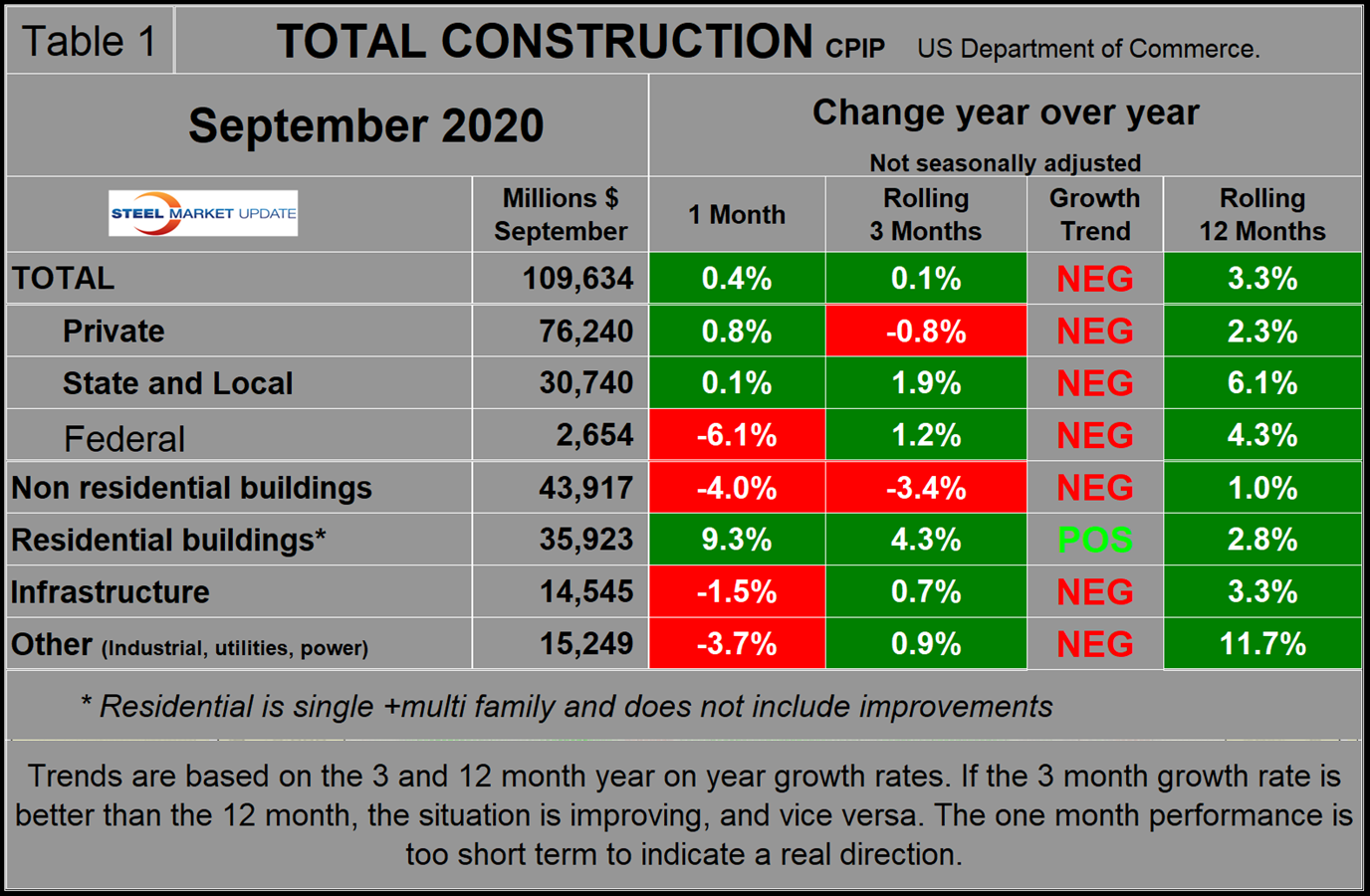
Figure 1 shows total construction expenditures on a rolling 12-month basis as the blue line and the rolling three-month year-over-year growth rate as the brown bars. Total construction was at an all-time high in the single month of September this year and narrowly exceeded August last year, the previous high. On the rolling 12-months basis shown in Figure 1, the peak was in April 2020. April and September 2020 were the only months ever in which the rolling 12-month total exceeded $1.2 trillion. The brown bars in Figure 1 show growth on a 3MMA basis year over year. Growth slowed from 8.1 percent in February to 0.1 percent in September. In 12 months through September 2020, construction expenditures totaled $1.2 trillion. (This number excludes residential improvements; see explanation below.)
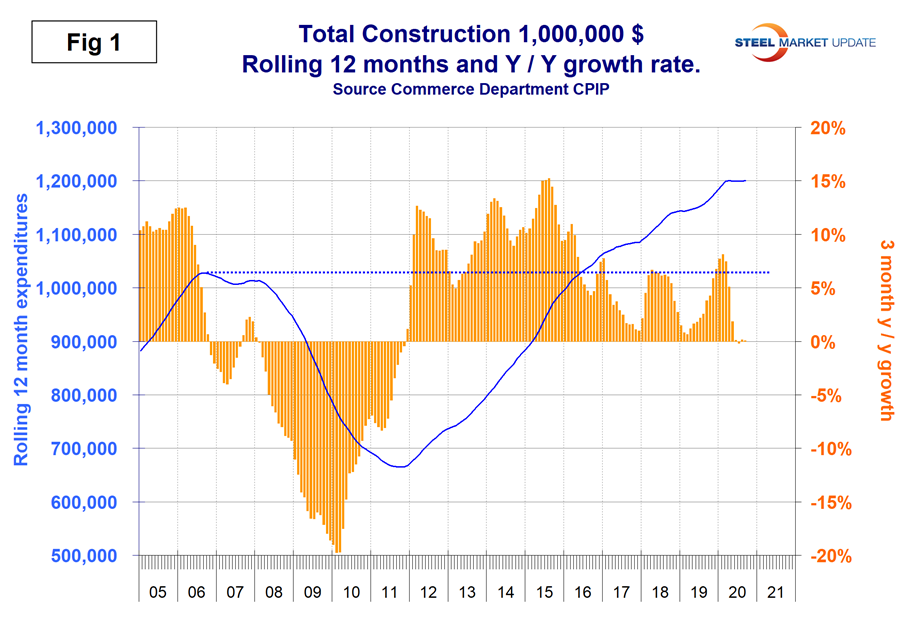
Figures 1, 2, 7, 8 and 10 in this analysis have the same format, the result of which is to smooth out variation and eliminate seasonality. We consider four sectors within total construction: nonresidential, residential, infrastructure and other. The latter is a catchall and includes industrial, utilities and power.
Private Construction
Table 2 shows the breakdown of private expenditures into residential and nonresidential and subsectors of both. The growth rate of private construction in three months through September was negative 0.8 percent, down from positive 7.3 percent in three months through February as shown by the brown bars in Figure 2.
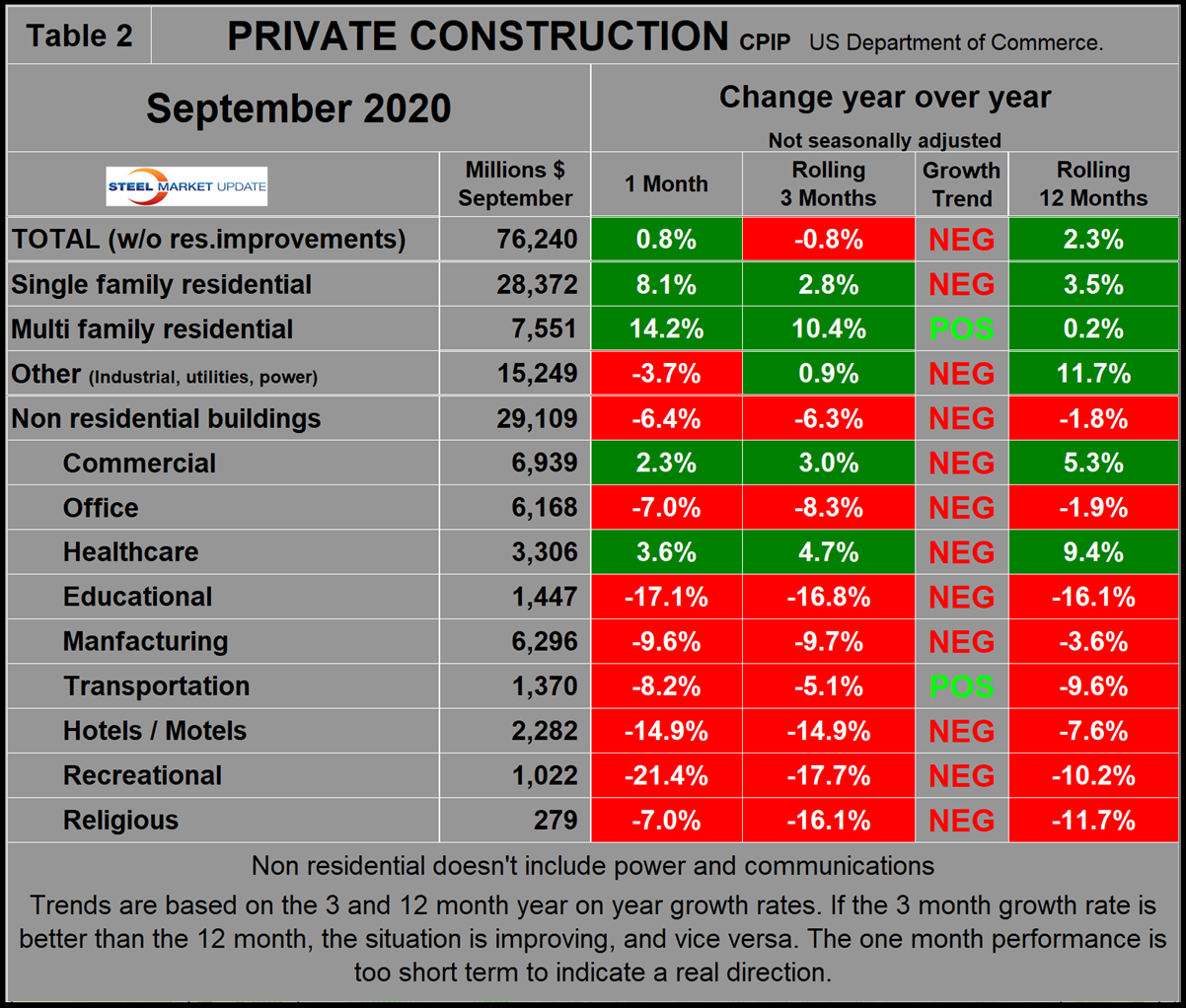
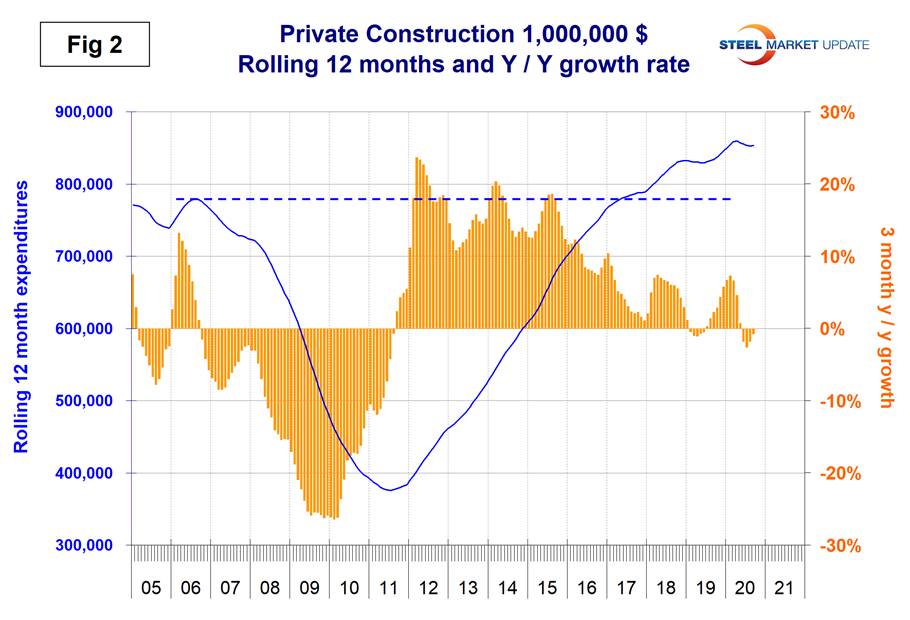
Within the private construction sector, the overall contraction resulted from a 6.3 percent decline in nonresidential buildings.
Excluding property improvements, single-family residential expanded by 2.8 percent in three months through September with negative momentum and multifamily residential expanded by 10.4 percent with positive momentum. Seven of the nine sectors within nonresidential construction declined, and momentum was negative for all but transportation terminals. The CPIP data that is the main focus of this report is based on spending work as it proceeds; the value of a project is spread out from the project’s start to its completion. The Census Bureau reports separately on construction starts, entering data for the whole project when ground is broken. Total housing starts expanded by 3.6 percent in three months through September year over year. The total is broken down into single-family and multifamily starts. Single-family starts expanded by 15.9 percent, while multifamily declined by 0.2 percent in three months through September year over year. Figure 3 shows the growth of both housing sectors since January 2005.
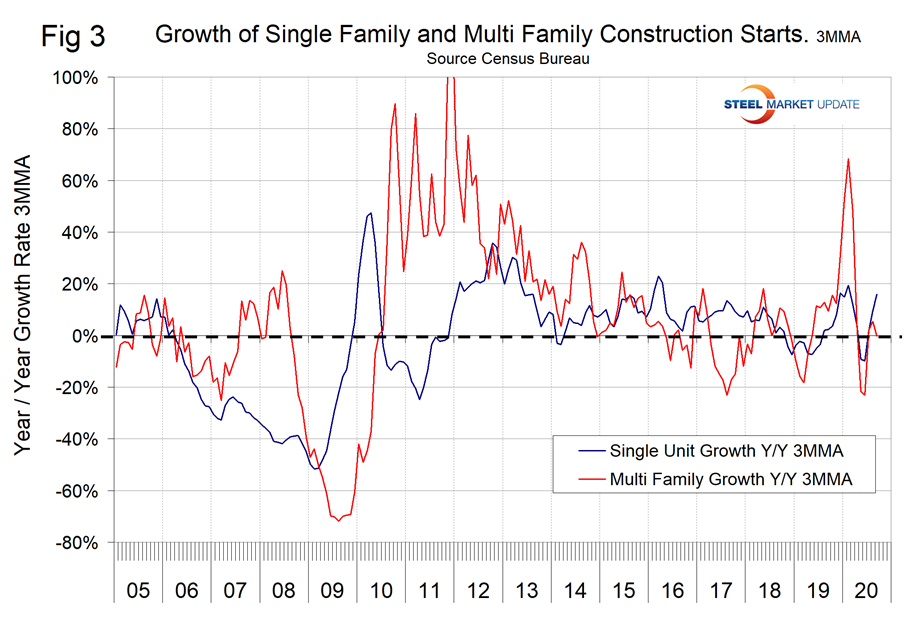
Figure 4 shows total housing starts in four regions with the South being the strongest and the Northeast the weakest. All four regions suffered major declines this year beginning in March, but have partially recovered since May. The National Association of Home Builders optimism index crashed in April, but recovered each month May through September as shown in Figure 5.
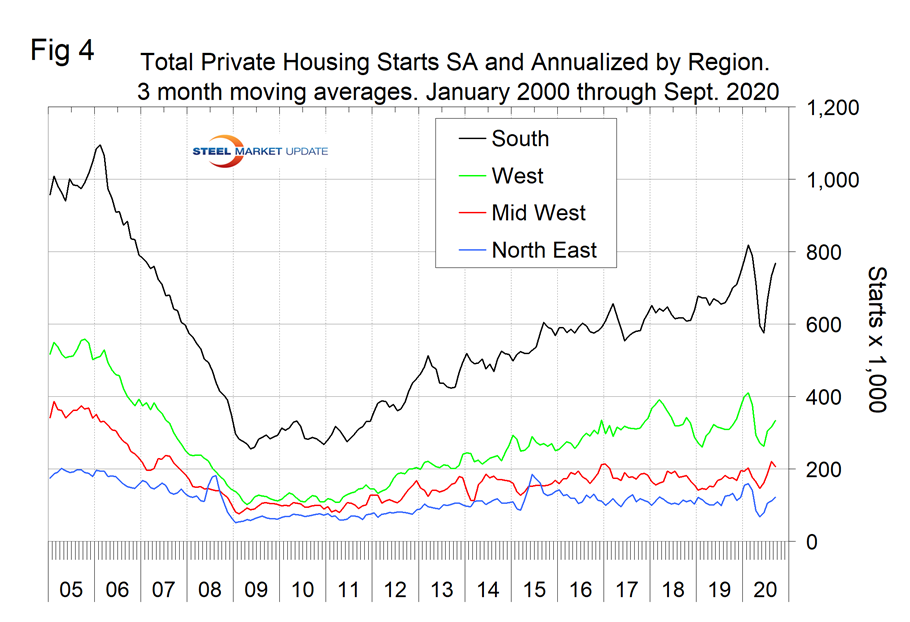
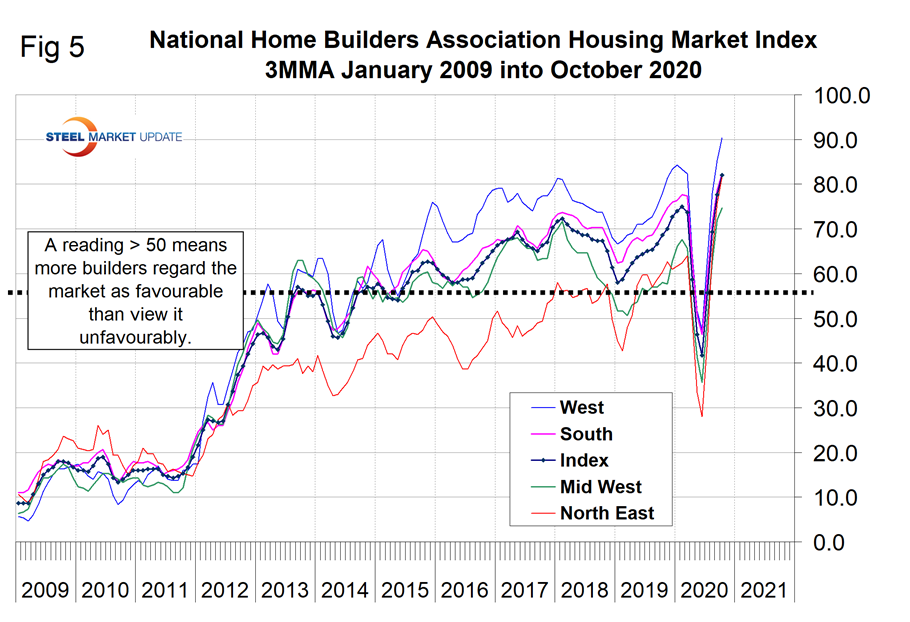
State and Local Construction
Total S&L expenditures recovered more slowly than private work from the last recession and are again showing a delayed reaction as they are holding up better than private expenditures today. This includes both infrastructure and nonresidential buildings. In three months through September, total S&L construction expanded by 1.9 percent and all building sectors had positive year-over-year growth on both a three-month and 12-month basis. In addition, health care and commercial had positive momentum. (Table 3).
Educational is by far the largest subsector of S&L nonresidential buildings at $7.6 billion in September and expanded at a 1.1 percent rate in three months through September. Figure 6 shows the history of total S&L expenditures.
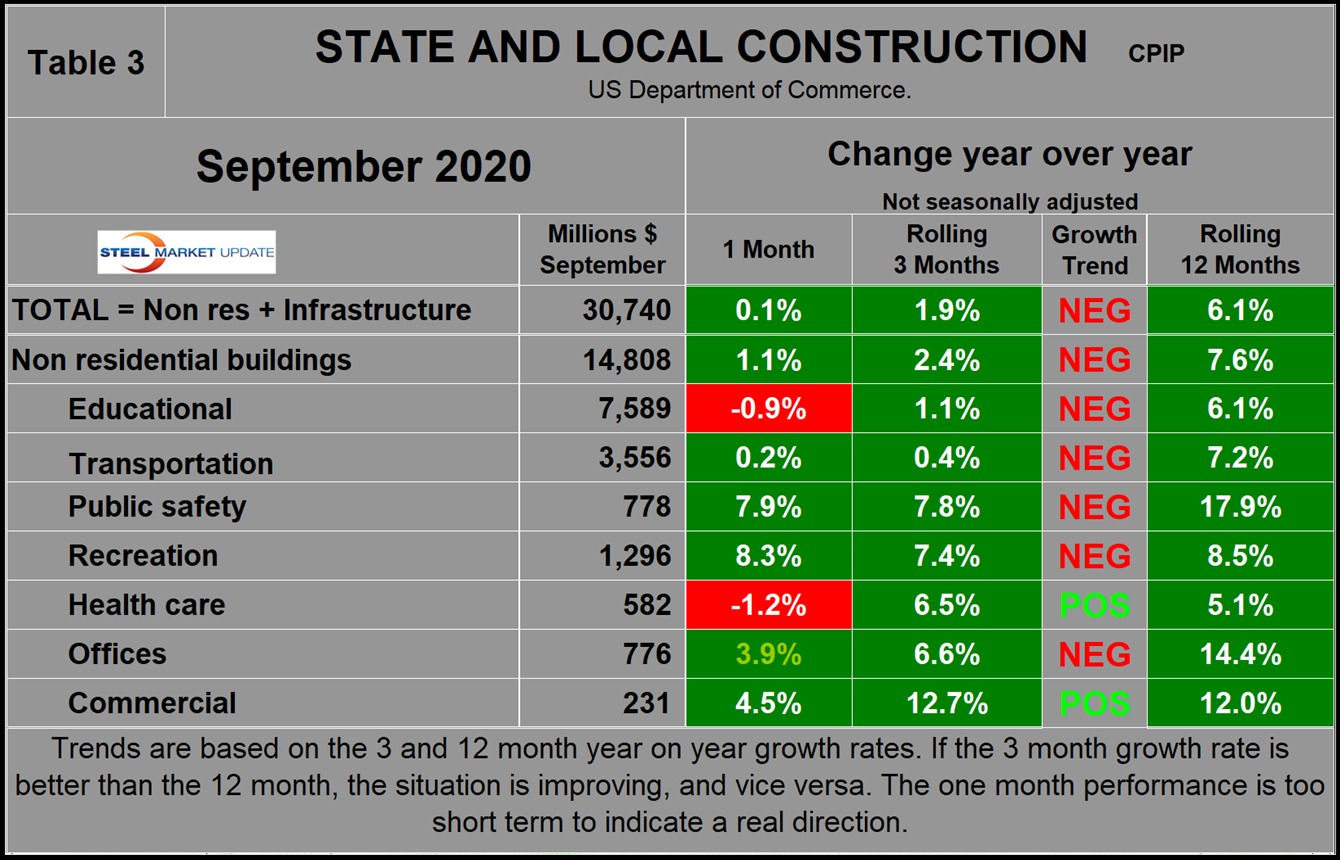
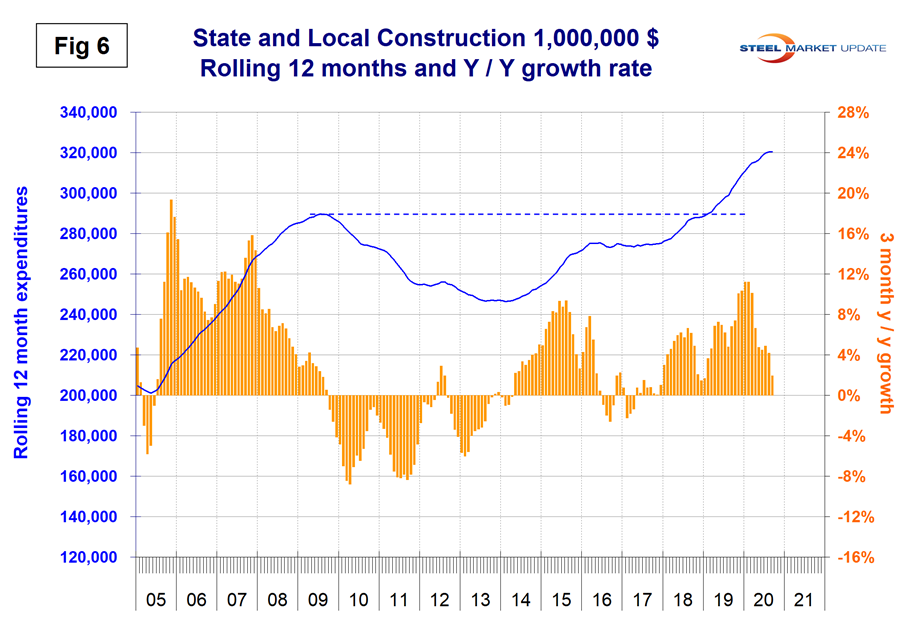
Drilling down into the private and S&L sectors as presented in Tables 2 and 3 shows which project types should be targeted for steel sales and which should be avoided. There are also regional differences to be considered, data for which is not available from the Commerce Department.
Infrastructure
Infrastructure expenditures have had positive growth since January 2019. Year over year, the growth of infrastructure expenditures in three months through September was 0.7 percent, down from 9.6 percent in February. (Note: There is no seasonality in this report as we are considering year over year data.) Highways and streets including pavement and bridges account for almost three-quarters of total infrastructure expenditures. Highway pavement is the main subcomponent of highways and streets and had a 4.2 percent growth in three months through September. Bridge expenditures have had a double-digit contraction rate every month since September 2019. Table 4 shows the breakdown of infrastructure expenditures in three months and 12 months through September and Figure 7 shows the rolling 12-month history of infrastructure expenditures and the year-over-year growth rate.
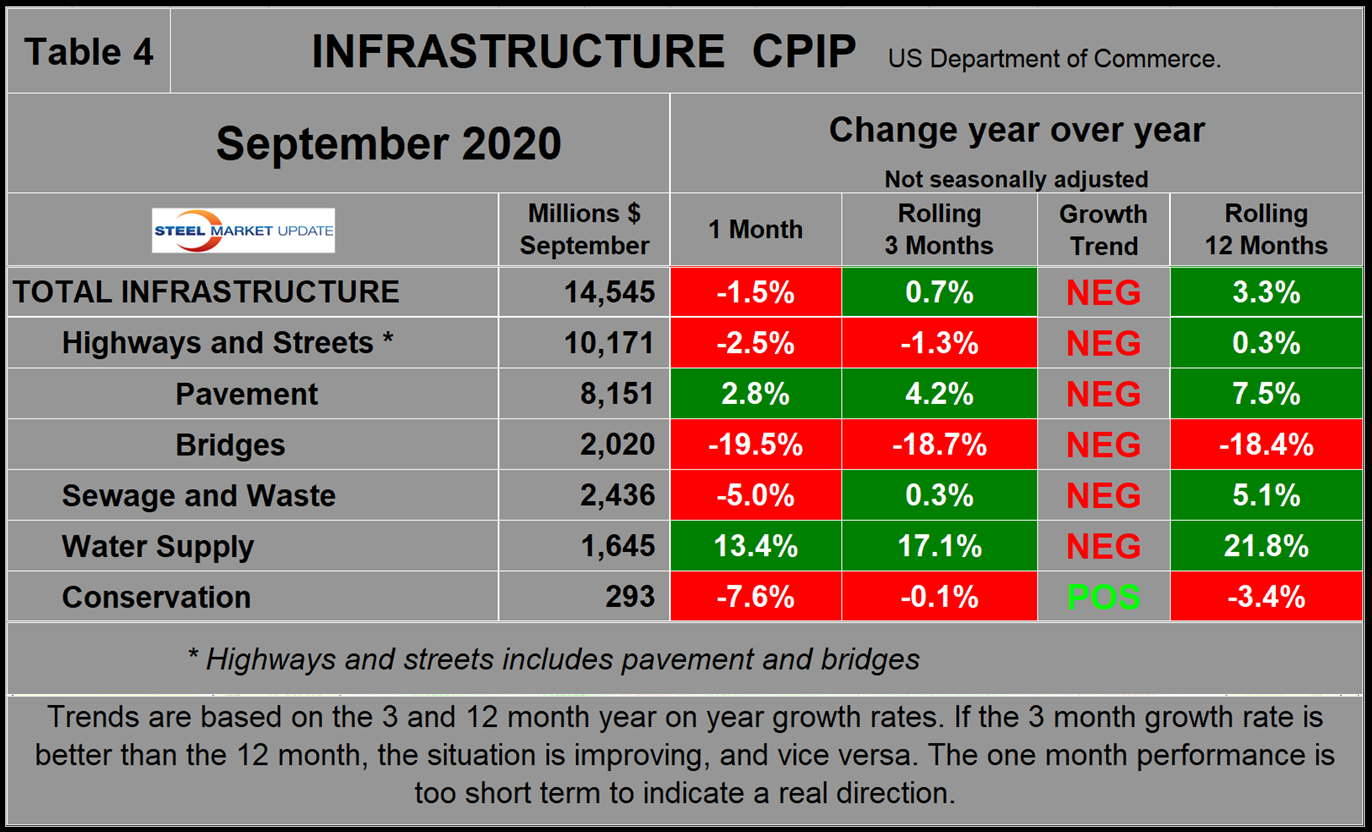
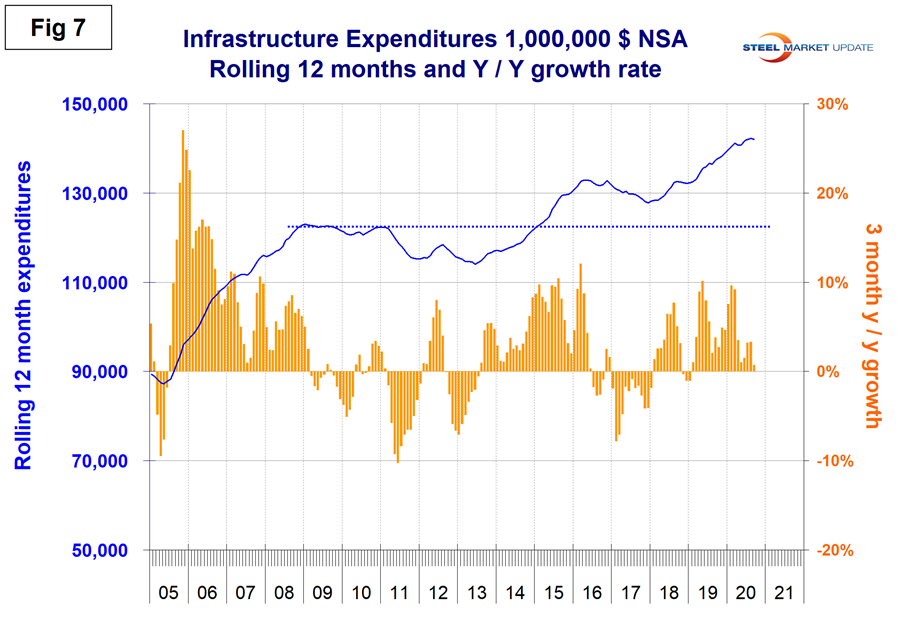
Total Building Construction Including Residential
Figure 8 compares year-to-date expenditures for the construction of the various building sectors for 2019 and 2020. Single-family residential is dominant, and in the first half of 2020 expenditures totaled $268.2 billion annualized.
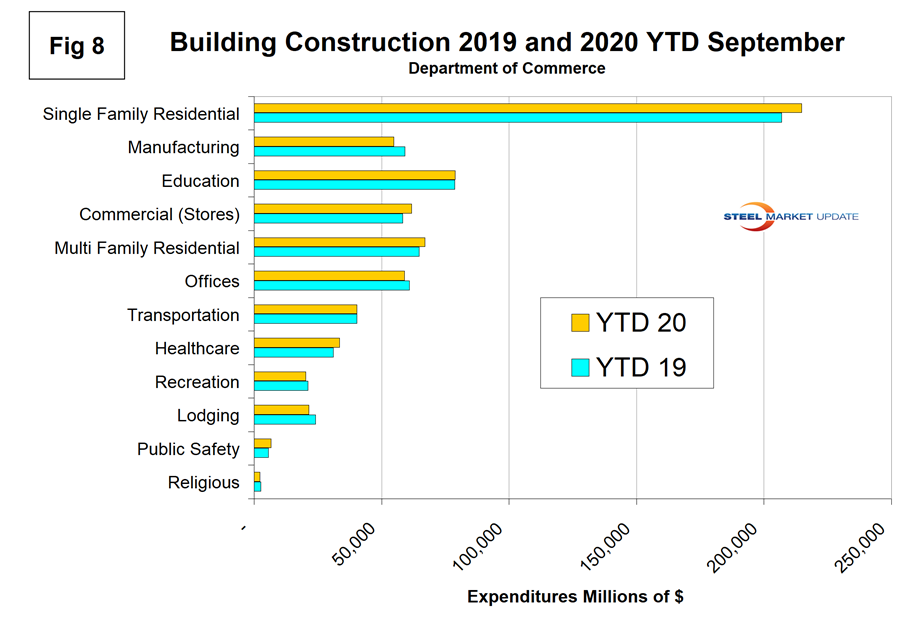
Figure 9 shows total expenditures and growth of nonresidential building construction. Growth has slowed every month since November 2019 and in September 2020 reached negative 3.4 percent.
Explanation: Each month, the Commerce Department issues its Construction Put in Place (CPIP) data, usually on the first working day covering activity one month and one day earlier. There are three major categories based on funding source: private, state and local, and federal. Within these three groups are about 120 subcategories of construction projects. At SMU, we analyze the expenditures from the three funding categories to provide a concise summary of the steel consuming sectors. For example, we combine all three to reach a total of nonresidential building expenditures.
CPIP is based on spending work as it occurs and is estimated each month from a sample of projects. In effect, the value of a project is spread out from the project’s start to its completion. This is different from the starts data published by the Census Bureau for residential construction, by Dodge Data & Analytics and by Reed Construction for nonresidential, and by Industrial Information Resources for industrial construction. In the case of starts data, the whole project is entered into the database when ground is broken. The result is that the starts data can be very spiky, which is not the case with CPIP.
The official CPIP press release gives no appreciation of trends on a historical basis and merely compares the current month with the previous one on a seasonally adjusted basis. The background data is provided as both seasonally adjusted and non-adjusted. The detail is hidden in the published tables, which SMU tracks and dissects to provide a long-term perspective. This is a very broad and complex subject, therefore, to make this monthly write-up more comprehensible, we keep the information format as consistent as possible. In our opinion, the magnitude of growth or contraction of the various sectors is more important than the absolute dollar value of the expenditures. CPIP data also includes the category of residential improvements, which we have removed from our analysis because such expenditures are minor consumers of steel.
In the four tables included in this analysis, we present the non-seasonally adjusted expenditures for the most recent data release. Growth rates presented are all year over year and are the rate for the single month’s result, the rolling three months and the rolling 12 months. We ignore the single month year-over-year result in our write-ups because these numbers are preliminary and can contain too much noise. The growth trend columns indicate momentum. If the rolling three-month growth rate is stronger than the rolling 12 months, we define that as positive momentum, or vice versa. In the text, when we refer to growth rate, we are describing the rolling three-month year-over-year rate. In Figures 1, 2, 6, 7 and 9, the blue lines represent the rolling 12-month expenditures and the brown bars represent the rolling three-month year-over-year growth rates.

Peter Wright
Read more from Peter WrightLatest in Steel Markets

Hot-rolled coil buyers continue seeking certainty
Steel market participants contend that buyers will remain in “wait-and-see" mode until some market stability is restored.

Latin American steel advocates warn on cheap import flood
Subsidized Chinese steel imports and cheap steel products from Association of Southeast Asian Nations (ASEAN) entering Latin American (LATAM) are threatening the region's steel market.

CRU: Steel prices fall amid global demand weakness
The forceful headwinds bearing down on steel markets across the globe have created demand challenges and sent prices southward. The US, however, challenged the global trend.

Hot-rolled price hikes garner mixed reactions from the market
Several steel market sources say they were blindsided when mills increased spot prices for hot-rolled coils this week.

Steel market participants mull the impact of US/Mexico S232 negotiations
Steel market participants learned that negotiations between the US and Mexico include discussions about Section 232 tariffs on steel and aluminum despite President Trump’s June 3 proclamation increasing the tariffs from 25% to 50% for all steel and aluminum imports—except for those from the UK.
